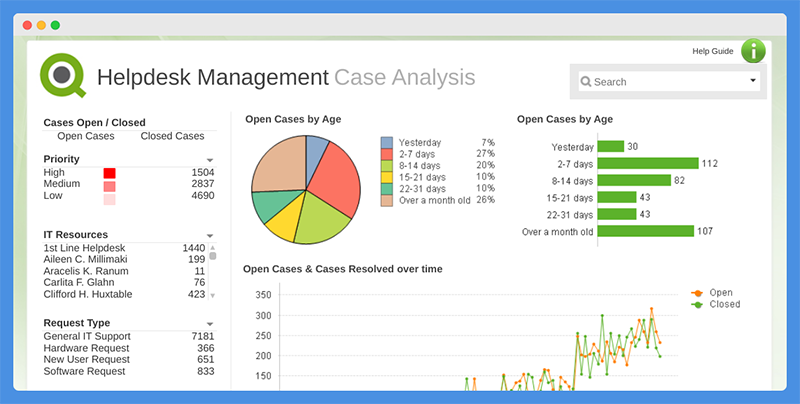Personal Career & Learning Guide for Data Analyst, Data Engineer and Data Scientist
As a data analyst, you are constantly on the lookout for tools and technologies that can help you quickly analyze, understand and make sense of large amounts of data. One of the most popular data visualization and business intelligence tools used by data analysts is QlikView. In this article, we will take a closer look at one of the key features of QlikView – the Resident Load.
What is Resident Load?
In simple terms, Resident Load is a method of loading data into QlikView that allows the data to be stored directly in the QlikView document. This means that once the data is loaded, it is available to be used and manipulated within the document without having to reload it from an external source. This is particularly useful when working with large amounts of data that take a long time to load from an external source.
Why use Resident Load?
There are several reasons why data analysts use the Resident Load method in QlikView:
Speed: With Resident Load, the data is stored directly in the QlikView document, which means that it is much faster to access and analyze than if it were loaded from an external source. This is especially important when working with large amounts of data.
Convenience: By using Resident Load, data analysts can easily work with their data within the QlikView document without having to constantly reload it from an external source. This makes it much easier to explore and analyze the data.
Improved Performance: By storing the data directly in the QlikView document, the performance of the document is improved, as the data is readily available for use and manipulation.
How to use Resident Load in QlikView?
To use the Resident Load method in QlikView, you will first need to load the data into the document. This can be done by using the Data Load Editor, which is a graphical user interface that allows you to specify the data source, select the data that you want to load, and specify how the data should be loaded.
Once the data is loaded, you can then use the Resident Load method to store it directly in the QlikView document. This is done by using the script editor, which is a powerful tool that allows you to write and execute scripts in QlikView. The script editor is used to create a script that specifies how the data should be loaded and stored in the document.
Conclusion
In conclusion, the Resident Load method in QlikView is a powerful tool that can help data analysts quickly and easily analyze and understand large amounts of data. By storing the data directly in the QlikView document, data analysts can work with their data more efficiently and with improved performance. If you are a data analyst looking to get the most out of QlikView, it is well worth taking the time to learn how to use the Resident Load method.
QlikView for Data Analyst – QlikView – Resident Load
 Loading...
Loading...
Latest end-to-end Learn by Coding Projects (Jupyter Notebooks) in Python and R:
All Notebooks in One Bundle: Data Science Recipes and Examples in Python & R.
End-to-End Python Machine Learning Recipes & Examples.
End-to-End R Machine Learning Recipes & Examples.
Applied Statistics with R for Beginners and Business Professionals
Data Science and Machine Learning Projects in Python: Tabular Data Analytics
Data Science and Machine Learning Projects in R: Tabular Data Analytics
Python Machine Learning & Data Science Recipes: Learn by Coding
R Machine Learning & Data Science Recipes: Learn by Coding
Comparing Different Machine Learning Algorithms in Python for Classification (FREE)
There are 2000+ End-to-End Python & R Notebooks are available to build Professional Portfolio as a Data Scientist and/or Machine Learning Specialist. All Notebooks are only $29.95. We would like to request you to have a look at the website for FREE the end-to-end notebooks, and then decide whether you would like to purchase or not.
